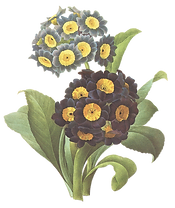Understanding Color Theory and Undertones in Makeup Application
- je02401
- Jan 31, 2015
- 2 min read
Color Theory is a concept that everyone who is seriously involved with makeup, should be aware of. It can take your makeup look from trashy to beautiful or just okay to amazing. Color theory helps you understand colors, how they work on the face, how they mix, or how they will look next to each other. The color wheel, which is typically what artists use to figure out what colors mix well with each other, is what helps makeup artists do the same thing. To be a top notch makeup artist, you should have an in depth understanding of the color wheel and color theory, but these are just some basic things that some or most people know.
There are primary colors: red, yellow, and blue; secondary (intermediate) colors: orange, green, and violet; and tertiary colors: yellow-orange, orange-red, violet-blue, etc. Secondary colors are made by combining two primary colors and tertiary colors are made by combining a primary color and an adjacent secondary color.
In makeup, undertones are so important in foundation matching, concealer matching, and figuring out which eye shadow colors will compliment different eye colors the best. There are two main undertones which are warm and cool. Warm colors tend to be bright and are usually red, orange, yellow, or variations of those colors. In make-up artistry, reds can be both cool and warm. If the red is blue based (a red with purple or blue undertone), it is cool. If the red is orange based, it is warm.
Cool colors tend to be calming and are usually violet, blue, green, or variations of those colors. In make-up artistry, the same theory applies with the color green. If a green has more gold/yellow undertone, then it is warm. If a green contains a bluer undertone, then it is cool. Whenever most colors have a blue undertone, they will always be a cool color.
For more information on color theory and understanding undertones, please refer to these outside sources:




Comments